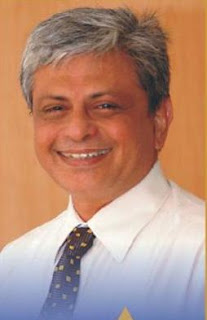Picture credit - Medium
Day 12 - Problem-Solving Skill
What is Problem-Solving Skill?
Problem-Solving Skill is the ability to determine the source of a problem and find an effective solution.
How to improve Problem-Solving Skill?
Set a goal to become a go-to person by mastering the art and science of Problem-Solving.
Follow the LAST model to build your personal brand as a Guru of Problem-Solving.
- Learn - Invest time in learning different models/ techniques of Problem-Solving
- Apply -
- Identify a model suitable to you
- Create a template to document the flow of the process
- Find opportunities to use the selected method/ template
- Maintain record/ process flow of every problem solving exercise you did
- Maintain notes of your thoughts/ insights/ failures/ challenges…. to be used for sharing/ training others
- Share - Share the insights captured in step 2 above in a planned manner (social media posts, blogs, videos, study notes…)
- Train - Generate opportunities to train your peers and team members so that, over time, your organization benefits from your efforts
My learning for the day
What is Design thinking?
Design Thinking is a method of problem solving that can achieve extraordinary, creative results. It’s a people-focused, instinctive approach.
Core features of design thinking include the abilities to a. resolve ill-defined or 'wicked' problems, b. adopt solution-focused strategies, c. use abductive and productive reasoning, employ non-verbal, graphic/spatial modelling media, for example, sketching and prototyping
Herbert Simon (1916-2001), American economist, political scientist and cognitive psychologist proposed ‘design as a way of thinking’ in 1969.
Design thinking is a five step process - Empathise, Define, Ideate, Prototype and Test
Empathise - Understand the human needs of all stakeholders (customers, employees, society…)
Define - Define the business problem analysing the data received from the Empathise phase (example - “80% of the users want a small and functional device that can brew 1 or 2 cups of strong coffee at a time’” - result of the ‘empathise’ study done by a coffee machine maker whose sales had stagnated)
Ideate - Use brainstorming techniques to ideate a suitable product design
Prototype - Create prototypes based on inputs from the Ideate state (e.g. the above stated company developed a number of versions of small coffee-espresso machines, ready to be tested by a user panel)
Test - This experimental phase is about identifying the best possible solution. The prototypes are repeatedly evaluated and improved based on user experiences.
Design thinking in action
Here are a couple of stories from Abhineet Sonkar’s article.
The Pirate Ship
Conflict – ~80% of the kids had to be forcefully sedated for MRI scanning because of the intimidating experience of the MRI machines
Design – Doug Dietz, Innovation Architect and Chief Designer of GE Imaging Machines created the scanner that was made to look like a pirate ship, and the room was decorated with their favorite Adventure Series characters. The entire MRI experience became like ‘playtime’ for kids.
Impact – Kids loved the new experience, Parents were equally relieved. Sedation rate went down from 80% to 10% - so both hospitals and parents benefited commercially.
Democratic Design
Conflict – IKEA, ready-to-assemble furniture company founded in 1943 by 17-year-old Ingvar Kamprad, had the same challenges that its industry faced - retail store design, supply chain management and delivery management to name a few
Design – IKEA introduced Democratic Design idea developed by French designer Phillipe Stark (“design that provides quality pieces at accessible prices”) and developed its product strategy around five dimensions of design, form, function, low price, sustainability and quality
Impact - IKEA’s design thinking approach pioneered many ideas such as distributed suppliers, just-in-time inventory, self pick-up and self-assembly
Purpose of this document
I took a 66 day challenge to study Life Skills last year (10 April 2019). To my astonishment, I succeeded in studying for 66 days one skill a day.
My objectives of learning these skills were - To strengthen my mind to face life’s challenges with ease, To use these skills in my worklife for a better performance, To use these skills in my personal life for enriching my relationships, To open new possibilities to surprise myself.
This is my next 66 day challenge (from 10 April 2020) - To share my Life Skills learning with my social media friends.
I pray that my toil helps you in your success journey.
What are Life Skills?
UNICEF defines Life skills as - psychosocial abilities for adaptive and positive behaviour that enable individuals to deal effectively with the demands and challenges of everyday life. They are loosely grouped into three broad categories of skills
- cognitive skills for analyzing and using information,
- personal skills for developing personal agency and managing oneself,
- inter-personal skills for communicating and interacting effectively with others.
Which LifeSkills are covered?
The World Health Organisation identified these basic areas of life skills that are relevant across cultures:
- Decision-making
- Problem-solving
- Creative thinking
- Critical thinking
- Communication
- Interpersonal skills
- Self-awareness
- Empathy
- Coping with emotions
- Coping with stress.
Some trivia
‘Life skills’ was never part of the school curriculum. WHO/ UNESCO mandated academia to teach these skills in all schools across the globe in 1993.
Different countries educate their children in these skills with different objectives
- Zimbabwe and Thailand - prevention of HIV/AIDS
- Mexico - prevention of adolescent pregnancy
- United Kingdom - child abuse prevention
- USA - prevention of substance abuse and violence
- South Africa and Colombia - positive socialization of children.


No comments:
Post a Comment